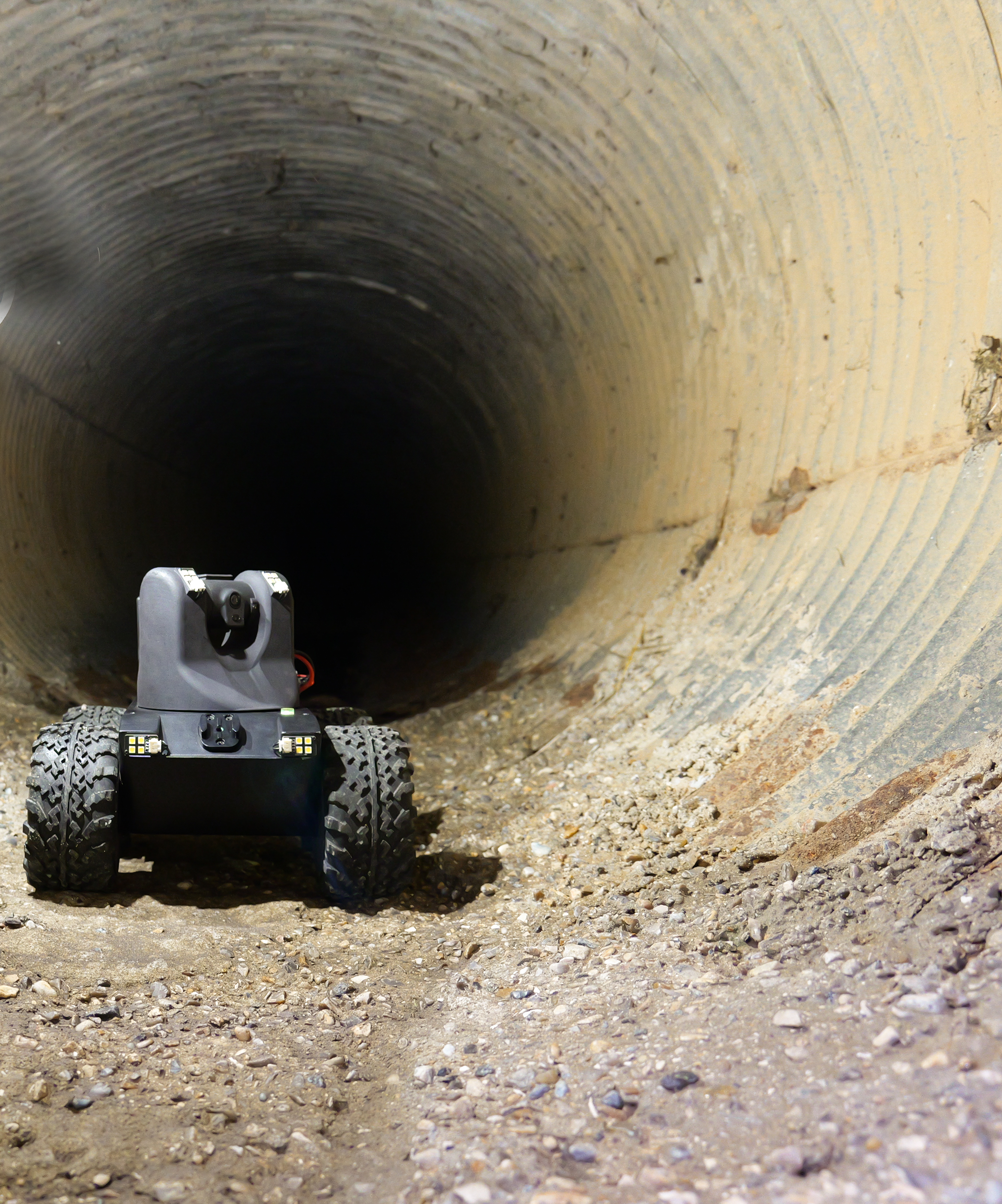:strip_exif()/reboot/media/95268e66-9e53-11ed-b306-0242ac14000b/731629e0-7efc-11ef-93bd-0242ac120013/1-1-4-2.jpg)
How to choose the right drone for confined space inspection
Confined environment inspection, a technical challenge
Confined environment inspections represent a major challenge in sectors such as industry, construction and infrastructure. These environments include ducts, tanks, tunnels and sewer systems, which are often difficult to access or dangerous. The risks associated with darkness, poor air quality and confined spaces make these inspections particularly complex for human operators. Indeed, some areas require specific equipment, such as additional lighting systems or protection against noxious gases, increasing the risks to human safety.
The use of drones for inspection in confined environments is emerging as an innovative solution, making it possible to limit worker exposure while ensuring rapid, detailed inspection. However, with the wide range of drones available on the market, it can be difficult to find the right model for this type of mission. Many technical criteria need to be taken into account to ensure the success of these complex operations.
Essential criteria for a drone suited to inspections in confined environments
Manoeuvrability and size
For confined environments, a drone must be both compact and extremely manoeuvrable. Its small size enables it to navigate in confined spaces, often cluttered with pipes, cables or other physical obstacles. A device that is too large risks not only jamming but also damaging its own components if it comes into contact with walls.
Manoeuvrability is also essential to control the drone's movements with precision. It must be able to adapt quickly to changes in orientation and positioning in areas where there is little room for manoeuvre. The absence of GPS in these areas makes this skill even more crucial, requiring sophisticated stabilisation systems such as optical stabilisation.
Sensor and camera quality
Inspections in confined environments require highly accurate image capture. For this reason, the quality of the on‑board sensors and camera plays a key role. A high‑resolution camera can detect the smallest defects or anomalies, while specialised sensors can analyse the environment.
Drones equipped with thermal, infrared or even LIDAR sensors are increasingly used to assess conditions in these often hostile environments. A drone equipped with a 4K camera can provide images in real time, enabling operators to make reliable diagnoses without having to visit the site.
Autonomy and flight time
The drone's autonomy is a crucial criterion, especially when operating in confined spaces where every minute counts. The drone must be able to fly long enough to complete an inspection mission without requiring multiple interruptions to recharge its battery. A flight time of 10 to 15 minutes is generally recommended for confined environments, providing sufficient coverage to inspect complex structures without compromise.
Too little autonomy could delay the mission, particularly if the operator has to regularly return the drone to its home base to recharge it. A balance between flight performance and energy management is therefore essential to ensure smooth operations.
Resistance to specific environmental conditions
Drones operating in confined environments often have to cope with extreme environmental conditions. The presence of dust, humidity, corrosive gases or temperature variations can damage the device if it is not properly protected. It is therefore essential that the drone is designed with a robust shell and resistant components to withstand these environments.
Protection against dust and humidity, for example, helps to extend the drone's lifespan and avoid mid‑air breakdowns. What's more, some inspection missions require the drone to come into contact with walls, so it's important to have protection such as an external cage to avoid damaging the device.
Technical options available and innovative solutions on the market
The market for drones for confined space inspection offers a range of solutions to meet a variety of needs. Among the models that stand out, Multinnov's Stereo2 and Roview2 offer innovative, high‑performance options that are particularly well suited to complex environments.
The Stereo2 drone: a compact, robust solution
The Stereo2 is a drone designed specifically for inspection in confined spaces. With a diameter of less than 40 cm, it can easily navigate in narrow spaces such as ducts or manholes. Its small size does not compromise its manoeuvrability: it remains extremely agile and can move around congested areas with ease.
Another key feature of the Stereo2 is its protective cage, which allows it to bounce off surfaces without risking damage to its components. This is particularly important in confined environments where avoiding contact is almost impossible.
This drone also incorporates optical stabilisation to compensate for the absence of a GPS signal, ensuring precise navigation. The Stereo2 is capable of recording its movements in real time and producing a 3D map of the inspected environment, facilitating post‑inspection diagnosis.
Finally, its integrated LED lighting ensures optimum visibility even in the darkest of spaces, while its passive ventilation system makes it highly resistant to dust.

Rover Roview2: a versatile robot for land and underwater inspections
The Roview2 is a land and water robot that stands out for its versatility. Designed for inspections in both dry and submerged environments, it is equipped with a 4K camera capable of capturing sharp, high‑resolution images, with live 1080P video feedback. Its waterproof hull and buoyancy allow it to navigate in wet and submerged environments, where aerial drones cannot operate.
The Roview2 is also equipped with a real‑time telemetry system, enabling precise measurement of the distance covered. This feature is essential for missions requiring compliance with strict safety standards, such as sewer inspections.
Thanks to its ability to negotiate obstacles and navigate in congested areas, the Roview2 guarantees smooth, accurate inspections in complex conditions.

Choosing the right drone for efficient and safe inspections
Choosing the right drone for inspections in confined environments depends on a number of criteria: manoeuvrability, sensor quality, autonomy and resistance to specific conditions. Multinnov's Stereo2 and Roview2 stand out for their technical innovations, guaranteeing precise and safe inspections while reducing the risks for operators.
:strip_exif()/reboot/media/95268e66-9e53-11ed-b306-0242ac14000b/7e1d7cf8-a2df-11ed-b843-0242ac14000b/1-1-multinnov-pour-fond-blanc.png)
:strip_exif()/reboot/media/95268e66-9e53-11ed-b306-0242ac14000b/7e1d7cf8-a2df-11ed-b843-0242ac14000b/1-1-multinnov-pour-fond-blanc.png)
/reboot/media/95268e66-9e53-11ed-b306-0242ac14000b/e450df62-9de5-11ef-8deb-0242ac120013/1-1-capture-d-ecran-2024-11-08-103326.png)
/reboot/media/95268e66-9e53-11ed-b306-0242ac14000b/2410fe10-8e8e-11ee-b27d-0242ac12000c/2-2-pipe-inspection.jpg)
/reboot/media/95268e66-9e53-11ed-b306-0242ac14000b/7045ed70-a0fa-11ef-bb20-0242ac120013/1-1-p1002609.jpg)